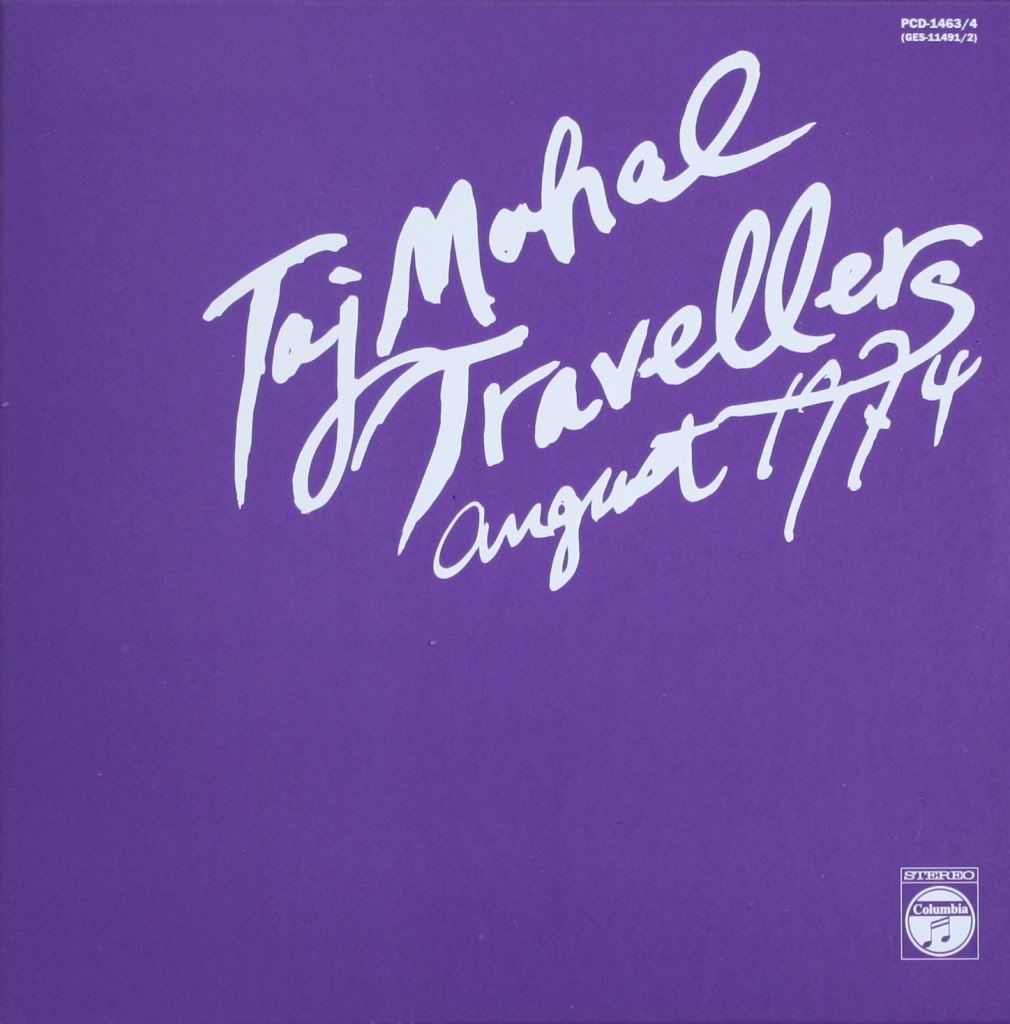Thursday, March 24, 2011
Taj Mahal Travellers - August 1974
Taj Mahal Travellers has nothing to do with American blues rock, or anything to do with the Indian mausoleum, for that matter--they're Japanese. This is another great example of music that should not be judged by traditional aesthetic standards as well as a good comparison/contrast to the AMM album I wrote about earlier this week.
The particulars of this music are actually easy to describe--few instruments are usually playing at the same time, there's little in the way of tonal development, and it's quite repetitive. Though each track fades out at the end, it appears to be a continuously-recorded performance. The backbone of the group's sound is drone; the recording moves incredibly slowly and deals with huge blocks of tone. For instance, at the album's outset the main drone is a bowed electric guitar, which plays more or less continuously on the same note while hand percussion, wooden xylophone, synthesizer, some sort of brass instrument, harmonica and voices all fade in and out. The instruments make and repeat short statements, or they let loose long threads of tone, layering with the guitar (for now) into the texture of the overall drone. Add to the list of instruments a few traditional Japanese instruments and a violin and you've basically got the sonic palette for the whole album, and it's a double.
Yes, it's easy to describe what's being done for over 80 minutes worth of music, and yet, when it comes to describing just why this album is so righteously awesome, the right words just can't be found. Though the style of music is totally different, on one level this album is strongly reminiscent of Miles Davis' On The Corner. At any given time, there aren't really that many instruments playing, but if you pay attention you start to notice that an instrument will appear in the mix, hang around for a few minutes then fade out just as delicately as it originally appeared, contributing a texture or color to the sound without altering the overall mood. After a while, though, you might notice that none of the instruments that were playing 20 minutes ago are still playing. The overall mood and quality of the sound moves similarly, changing slowly and subtly but hitting a few fairly distinctive areas over the course of the album. My favorite passage happens about a third of the way through the second track, where the layered wordless voices and dulcimer-like Japanese folk instruments reach a soaring, epic swell. The third track has some pretty awesome primal percussion/synth jams, and the fourth has a lot of delay-treated violin. This is one of my favorite mood-centric albums--the overall feeling is mysterious, cathartic, and at times pretty weird. While it's pretty moody, it's not really too dark, and it functions equally well as a meditative soundtrack as it does for close-listening. The emphasis on shifting texture, the change between spaciousness and thick soundscapes, and especially the sound-exaltation that's possible when you really lose yourself in the timbre of the droning instruments offers an experience unlike a lot of mainstream music, but at the same time fairly accessible. It's not quite as sonically-challenging as the less-repetitious and more freely-atonal works of a group like AMM, but this (and their strongly-recommended first album) demonstrates that experiments with free improvisation can deliver widely differing but similarly rewarding results.
This album is out of print...find it here.
Subscribe to:
Post Comments (Atom)


No comments:
Post a Comment